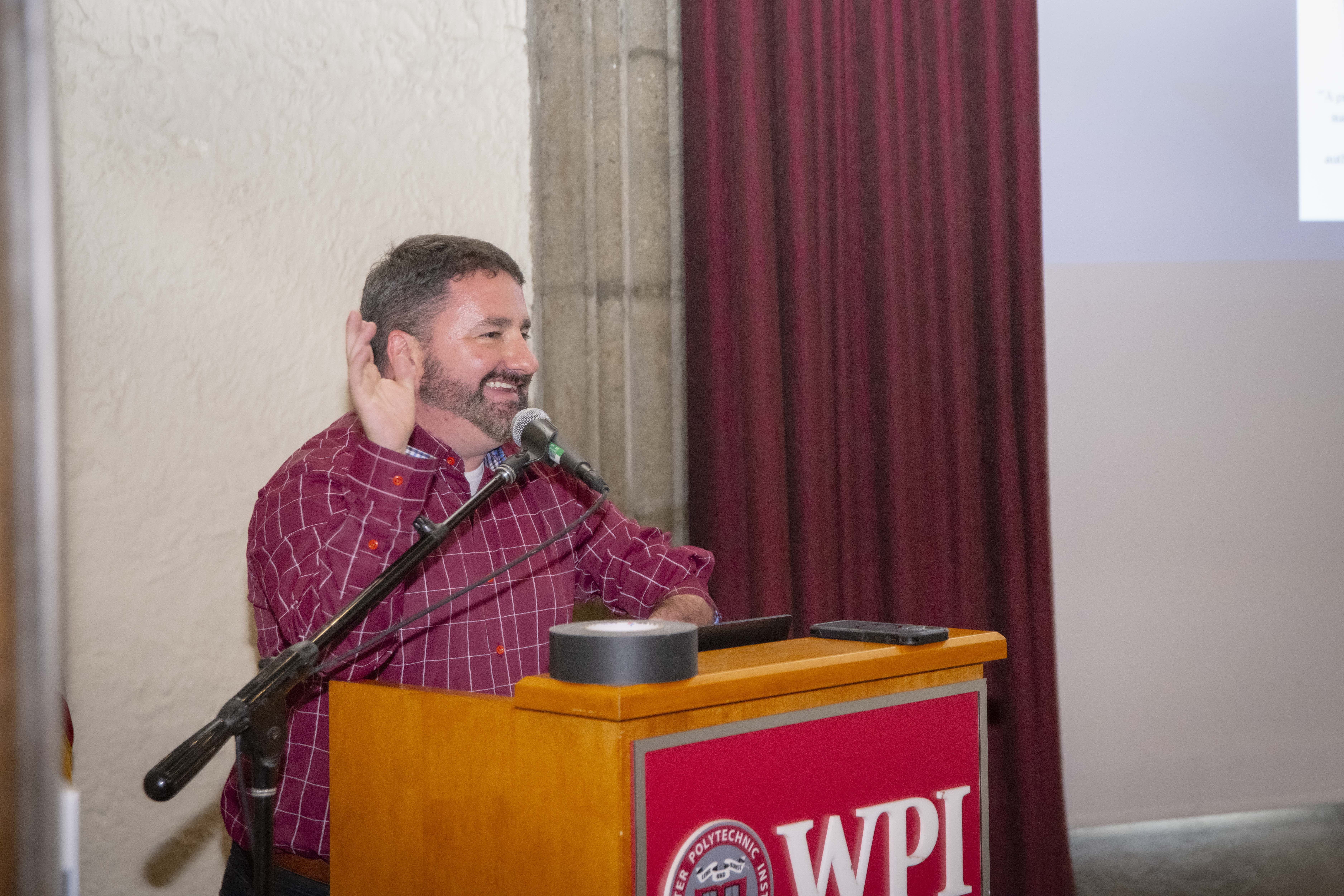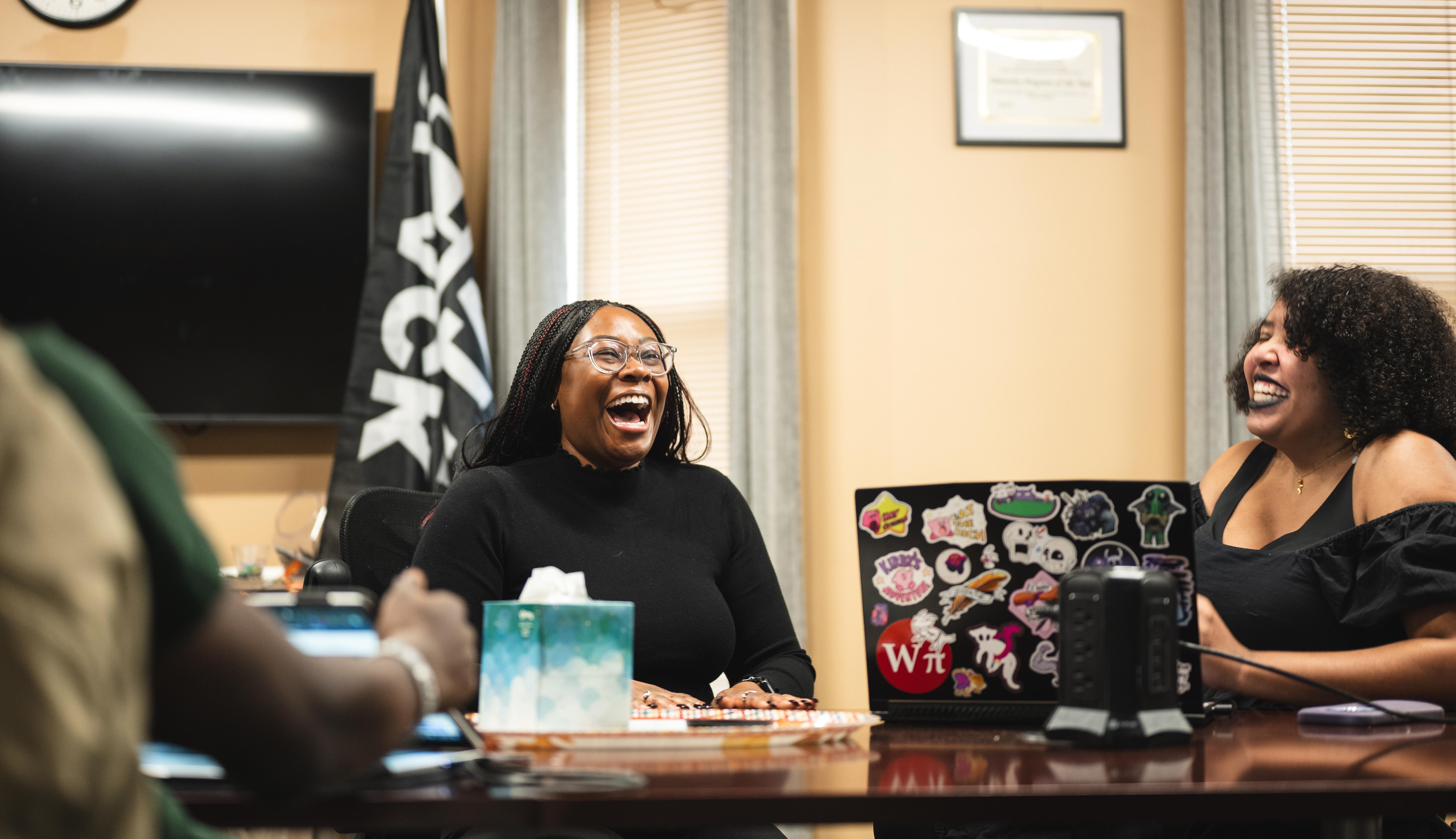Formerly known as the Office of Multicultural Affairs, the Office of Diversity, Inclusion, and Multicultural Education (ODIME) is preparing to welcome students not only back to campus, but into its new spaces. Director of Multicultural Education and Community Engagement Arnold Lane Jr., Assistant Director of ODIME Mia-Kay Fuller, Director of Academic Programming and Student Transitions Rachael Heard, and Administrative Assistant Nikita McKay met with the Herd to discuss how and why ODIME’s name change came about, what other changes students can expect come the beginning of classes in August, and how the staff envisions ODIME’s growth in the future.

Q: Can you describe how the rebranding came about, and the process of how ODIME was decided upon as the new name?
AL: We have been exploring a name change since before our previous director [Tiffiny Butler] left WPI. We were interested in redefining our office brand while also bringing it more into modern times and equating it with today’s standard of diversity, equity, inclusion, and belonging (DEIB) work. A few names were floated around last year, and we took them—as well as the university’s new strategic plan [Lead With Purpose: 2021-2026]—and discussed some options with student clubs and organizations to get their input as well.
RH: We have been doing a lot of education through social media, university announcements, and different workshops with students and campus organizations, and the new name better aligns with that work, as well as the times we are living in. We talked with the Student Government Association (SGA) and Graduate Student Government (GSG) to see what is working well, what isn’t, and what students need from us and our office. As a whole, it better showcases what we represent: building a stronger sense of community and belonging through diversity, equity, inclusion, and belonging while working for students.
Q: Are there any key differences students should know about concerning the office/its resources and services when they return to campus in the fall?
AL: The branding will be different, but our programs and services will essentially be the same. Our staff will now have functional areas and strategic alignments. We just hired the inaugural Assistant Director for Religious and Spiritual Life, and we will be focusing on LGBTQIAP+ student support and diversity programs that students will see and feel across campus and throughout the community.
We will also be expanding our footprint with the Center for Black Excellence and the Lavender Lounge, with more identity centers to come. The newest identity centers will be located in the Rubin Campus Center and will act as places for students to come together and build a community while educating the masses on these identities and cultures and highlighting these student populations as part of our campus community.
We also are remodeling the exterior of the OASIS Multicultural Center (OASIS House) and renovating its kitchen. The Collegiate Religious Center (CRC) will be installing a wheelchair ramp to allow all community members to access and utilize the space. It is being done with the hope that these spaces will continue to be a hub for our students and the WPI community.
Q: What excites you the most about the rebranding and what it will bring to the WPI community?
AL: The fact that we are re-centering diversity and inclusion and being more thoughtful and intentional about what this means for WPI. We are shifting the climate, and ODIME being one of the key areas on campus at the forefront of these efforts excites me the most. We have brought to light some critical conversations that we were not having as a community, and we have become more entrenched in the institutional strategy. Advocacy for students and elevating their voices keeps pushing our work forward, helping us to create the community we are destined to be.
RH: Any reorganization or rebrand comes from a change outside of the office, to better align with the needs of students and the community. There is a lot of positive momentum happening right now, and this is just the beginning of putting those puzzle pieces into place. I am excited to see how things continue to unfold.
MKF: What I appreciate and am excited for is that our rebrand encapsulates everything we have been working toward for the past academic year. We have become more strategic in focus, and we are able to contribute in a clearer, more direct way. Our rebrand shows this, as well as exactly what our office provides.
Q: What kinds of strides do you envision ODIME and WPI’s campus in general to have made over the next five years?
RH: I would love to see diversity, equity, inclusion and belonging (DEIB) work become more sustainable across divisions and departments. DEIB work is everyone’s job, and I think there is a real opportunity here for all of our campus community members to become part of the story in an intentional way. I would love for each department to have its own goals and create missions to be more inclusive with a DEIB lens on recruitment efforts and offerings.
AL: This work needs to be more than a moment, and I feel like it will be because the pillars of the strategic plan call for an intentional look into access, well-being, and inclusion. A lot of this started with those well before us [past OMA leaders and staff]; they created the foundation of what this office is, and now we are building on it. Student needs must be met, and we need to live up to that challenge. With all of 2020 and the racial reckoning that came out of it along with last year’s mental health crisis, we will leverage those moments for what they were and take this movement into the next 50 years at WPI.




